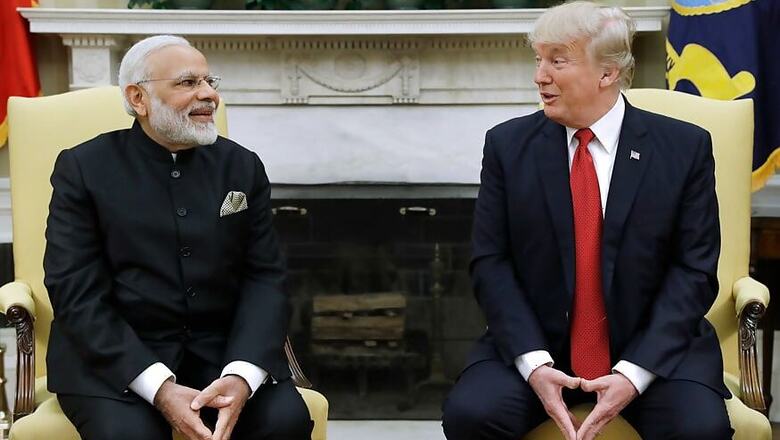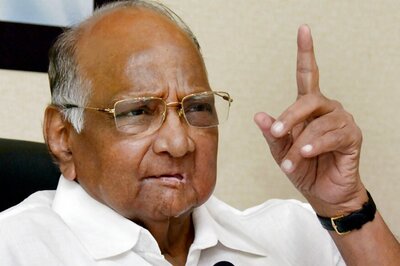
views
The recent announcement made by United States intending to terminate India’s and Turkey’s designations as beneficiary developing countries under the Generalized System of Preferences (GSP) program has sought much attention among trade and international relations experts.
The US contends that both these countries no longer comply with the statutory eligibility criteria. As per US, India has implemented a wide array of trade barriers that create serious negative effects on United States commerce and despite intensive engagement, India has failed to take the necessary steps to meet the GSP criterion.
Media reports suggest wide array of consequences and actions on the part of India ranging from ‘downplaying of significant economic impact’ to ‘further diplomatic consultations’ to ‘recourse to the WTO dispute settlement mechanism’. Without getting into the economic and political aspects, the focus of this piece is to throw some light on the legal facet of this development.
The legal basis of Generalized System of Preferences can be located in the The 1979 GATT Decision on Differential and More Favorable Treatment, Reciprocity, and Fuller Participation of Developing Countries (also known as the ‘Enabling Clause’).
This Clause has become an integral part of the GATT 1994 to which India and US are both parties.
The Enabling Clause which is an exception to the Most Favored Nation Principle (MFN) states that members may accord ‘differential and more favorable treatment’ to developing countries, without according such treatment to other members.
‘Differential and more favorable treatment’ means that developed country members may give preferential tariff treatment to products originating in developing country members in accordance with their generalized system of preferences. In the present instance, the US allowed duty-free entry of imports from India up to $190 million per annum. As per the World Bank data, India is currently the largest beneficiary of the ‘generalized system of preferences’ (GSP) programme.
Notwithstanding the inherent limitations of the WTO structure and without treating it as a suggestion from our end, if India decides to pursue the case at the WTO Dispute Settlement Body (DSB), then the primary question would revolve around the legality of the US measure.
The US implemented the generalised system of preferences through a domestic law- Trade Act of 1974. Sections 501 and 502 are the relevant provisions empowering the President to, inter alia, grant, extend, withdraw, suspend or limit preferences. However, in case of a challenge, the WTO DSB will gauge the legality of the executive action as well as the relevant legislation on the touchstone of the GATT 1994. In this regard, the US may contend that granting of tariff preferences is a discretionary act as the Enabling Clause in GATT 1994 uses the term ‘may’ instead of ‘shall’.
India, on the other hand, can challenge the US measure by arguing that the measure violates the Enabling Clause of GATT 1994. As per the US, India has employed a number of trade barriers that create serious negative impacts on United States commerce and has also failed to provide the US with equitable and reasonable access to its market. However, it is to be noted that according to Part IV of the GATT 1994, the nature of GSP benefits do not seem to be ‘reciprocal’ i.e. “when developed countries grant trade concessions to developing countries they should not expect the developing countries to make matching offers in return”.
In addition to it, India may make use of its previous challenge to the European communities which resulted in the EC-Tariff Preferences case of 2004 at the WTO, despite this decision only being binding upon the parties to the dispute. In this case, the substantive issue was whether differential tariff preferences can be accorded to differently placed developing countries.
The WTO Appellate Body concluded that a developed country member may grant an additional preferential treatment to some in comparison to other developing country members, as long as it is available to all ‘similarly situated’ developing country members. The determination of whether the developing country members are similarly situated must be based on an ‘objective criteria’ which may include the development, financial and trade needs of the country.
In the present situation, the onus would be on the US to justify the basis of its measure, which discriminates only against India and Turkey and not others. In its official statement, India has argued that “its tariffs are within its bound rates under WTO commitments, and are on the average well below these bound rates. India’s trade weighted average tariffs are 7.6%, which is comparable with the most open developing economies, and some developed economies. On developmental considerations there may be a few tariff peaks, which is true for almost all economies.”
It would be interesting to see how the discourse pertaining to the dispute shapes up in future. In this global protectionist environment, the only expectation would be that the countries do not resort to a tit-for-tat trade war like that between US and China.
(Farheen Ahmad is a research scholar at South Asian University, New Delhi, while Anmolam is a lawyer and runs a non-profit organisation BDLAAAW)




















Comments
0 comment